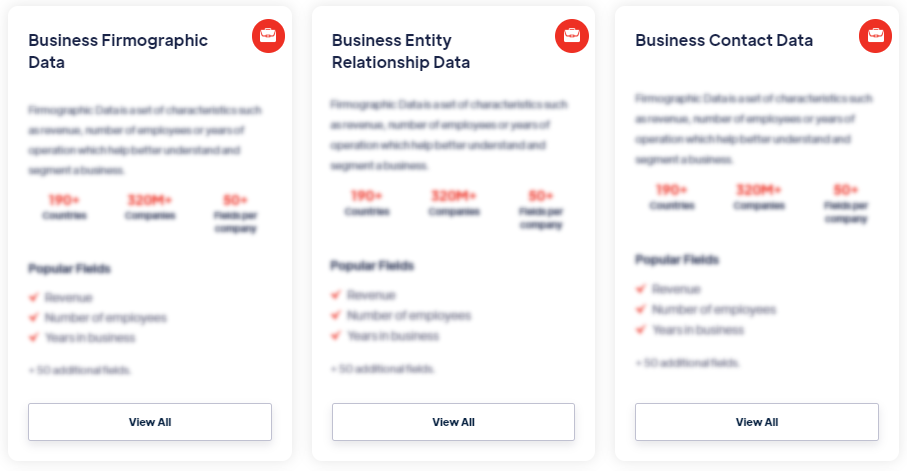Best
Risk Data
Products
Risk data refers to information that helps identify, assess, and mitigate potential risks. It includes data on different types of risks, their likelihood, impact, and associated factors. Risk data can be quantitative or qualitative and is used to analyze and quantify risks, support decision-making, and develop risk management strategies. Read more
Our Data Integrations


Request Data Sample for
Risk Data

Browse the Data Marketplace

Frequently Asked Questions
1. What is Risk Data?
Risk data refers to
information that helps identify, assess, and mitigate potential
risks. It includes data on different types of risks, their
likelihood, impact, and associated factors. Risk data can be
quantitative or qualitative and is used to analyze and quantify
risks, support decision-making, and develop risk management
strategies.
2. How is Risk Data Collected?
Risk data
is collected through various sources and methods. It can be
derived from historical records, incident reports, risk
assessments, surveys, interviews, expert opinions, or data
obtained from monitoring systems and sensors. External sources
such as industry reports, regulatory databases, and market data
may also contribute to risk data collection. The collection
process involves gathering relevant information on risk factors,
events, and contextual variables.
3. What Insights Does Risk Data Provide?
Risk data provides insights into the nature and characteristics
of specific risks. It helps identify potential hazards,
vulnerabilities, and exposures associated with various
activities, events, or situations. By analyzing risk data,
organizations can understand the likelihood and potential impact
of risks, prioritize their response efforts, and allocate
resources effectively. Risk data also facilitates the
identification of trends, patterns, and correlations between
risk factors, enabling proactive risk management.
4. How is Risk Data Used?
Risk data is
used to support decision-making processes and develop risk
management strategies. Organizations utilize risk data to
identify, assess, and prioritize risks based on their likelihood
and impact. It enables organizations to implement controls,
mitigation measures, and contingency plans to minimize the
likelihood and impact of risks. Risk data also assists in
regulatory compliance, insurance underwriting, and business
continuity planning.
5. Where Can Risk Data be Accessed?
Access
to risk data varies depending on the context and industry.
Organizations typically maintain their internal risk databases
and systems, which contain proprietary data specific to their
operations. External sources such as government agencies,
industry associations, research institutions, or specialized
risk data providers may offer access to aggregated or
sector-specific risk data. However, access to certain sensitive
or confidential risk data may be limited due to privacy,
security, or legal considerations.
6. What are the Benefits and Challenges of Risk Data?
Risk data provides several benefits, including improved risk
assessment, enhanced decision-making, and effective risk
mitigation. It enables organizations to identify and prioritize
risks, allocate resources appropriately, and implement targeted
risk management strategies. However, challenges may arise in
terms of data quality, availability, and integration. Obtaining
reliable and up-to-date risk data can be complex, especially
when dealing with emerging risks or limited historical data.
Additionally, interpreting and analyzing risk data requires
expertise and robust analytical capabilities.
7. How Can Risk Data Drive Business Success?
Effective utilization of risk data can drive business success
by enabling organizations to proactively identify, assess, and
mitigate risks. It helps organizations anticipate potential
threats, improve operational resilience, and protect assets and
stakeholders. By leveraging risk data, organizations can make
informed decisions, optimize resource allocation, and enhance
overall performance. Risk data also supports compliance efforts,
reduces potential losses, and fosters a culture of
risk-awareness and continuous improvement.
â€
